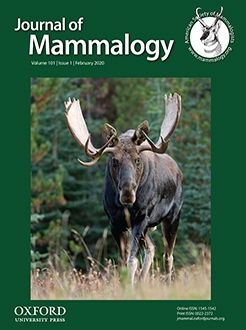We examined both historical (1960s) and recent (2017) specimens of an insectivorous bat species (Hipposideros armiger) and a phytophagous bat (Rousettus leschenaultii) from the same latitudinal range to explore phenotypic responses to environmental change in China over the past 65 years. Hipposideros armiger exhibited significant increases in forearm length and three diet-related cranial traits, as well as carbon and nitrogen stable isotope composition, suggesting that modern H. armiger must travel farther for food and may now use different food resources. In contrast, R. leschenaultii showed no change in forearm length but displayed significant increases in diet-related cranial traits. This study provides evidence for differential responses to recent environmental changes in bat species with different diets. The changes in diet-related traits of the two species and the forearm length change on the insectivorous bats suggest that recent phenotypic changes may be adaptions to land-use changes rather than to climate change.
How to translate text using browser tools
12 December 2019
Body size and diet–related morphological variation of bats over the past 65 years in China
Xinke Yue,
Alice C. Hughes,
Kyle W. Tomlinson,
Shangwen Xia,
Song Li,
Jin Chen
ACCESS THE FULL ARTICLE

Journal of Mammalogy
Vol. 101 • No. 1
February 2020
Vol. 101 • No. 1
February 2020
body size
climate change
diet-related cranial structure
isotope analysis
land-use change




